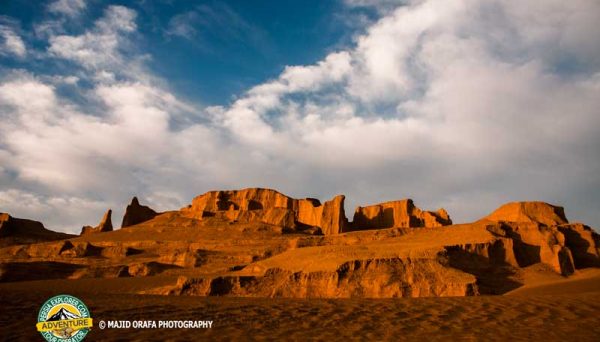Dasht-e lut

The Dasht-e Lut known as the Lut Desert is a large salt desert in southeastern Kerman Iran. In 2004 and 2005 this desert plateau recorded the year’s hottest surface temperature, up to 70.7°C (159.3°F). Coupled with the heat, the Dasht-e Lut vies with Chile’s Atacama Desert for the title of the world’s driest spot, and across a large area of the central Lut, not a single creature survives, even bacteria. The desert’s east has great visitor potential, with classic wind-sculpted dunes. The hottest part of Dasht-e Lut is Gandom Beryan, a large plateau covered in dark lava, approximately 480 square kilometers in area. In the Lut desert, the terrains which are called Kalut with their fantasy shapes are made out of erosion caused by wind on the mountains and sandy clay hills.
The largest Nebkas are sand dunes covered by plants and made out of the coexistence of soil, water, and plant. These Nebkas are nominated as desert vases. Rebdos are like Nebkas but bigger and located in Western Lut.
